Spalted wood: Zone lines get even more mysterious
Anyone can produce a black zone line, but how many people can manage zone lines in color?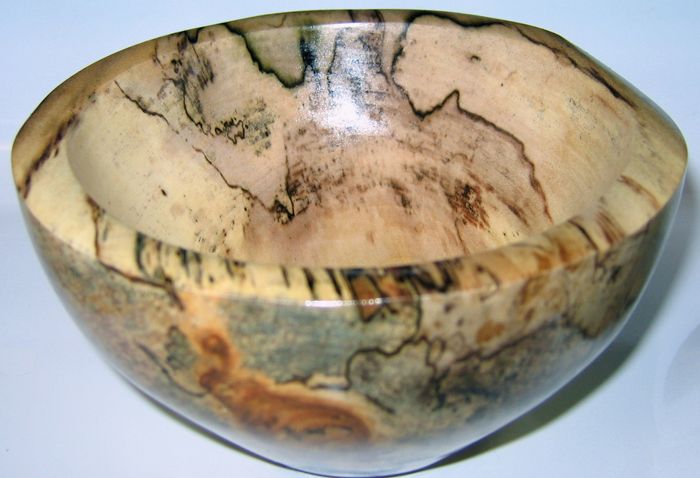
Green zone lines? How? Why?
Summer has come and gone, hence the Spalting Fungus of the Month will go on hiatus until next summer. Until then, I hope you’ll all help me brainstorm on an issue that has me a little confused: colored zone lines!
Historically…
In case you’re new to my spalting posts, zone lines are black, winding lines that meander through spalted wood. They’re caused by antagonism – either from one fungus to another or by only one fungus that has a serious case of self-loathing. Zone lines are composed of pseudo-sclerotal plates, which is a fancy way of saying ‘really dark, thick melanin’. Because PSPs are composed of dark tissue, zone lines have always been thought to be black or brown. Well, I have evidence to the contrary!
Dr. Spalting Disagrees!

One of my spalting bins has been producing green zone lines. The center of these lines is black, but upon pigment diffusion, a green color appears. In my experience, zone lines don’t diffuse, much less diffuse green! The best explanation I can come up with is that PSPs are actually a collection of many colors, and whatever fungus is responsible for these zone lines produces a diffusible green pigment. Thoughts?
Another Example
Birch seems to produce red zone lines on a pretty frequent basis. Like the green zone lines, these lines start with a solid dark center, out from which pigment diffuses. I assume that the mechanism for this is similar to the one I mentioned above, but in reality, I just don’t know.
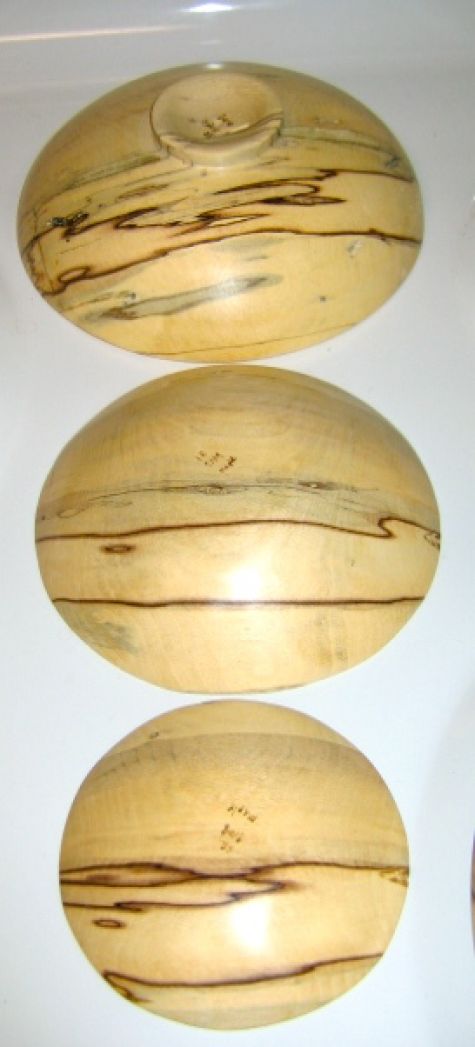
Thoughts?
If any out there has ever encountered any colored zone lines, I would love to hear about it. Any thoughts on the cause would also be appreciated. Regardless of the reason, I consider these types of zone lines to be rare and beautiful. Anyone can produce a black zone line, but how many people can manage zone lines in color?
Seri
Fine Woodworking Recommended Products

AnchorSeal Log and Lumber End-Grain Sealer

DeWalt 735X Planer

Ridgid R4331 Planer

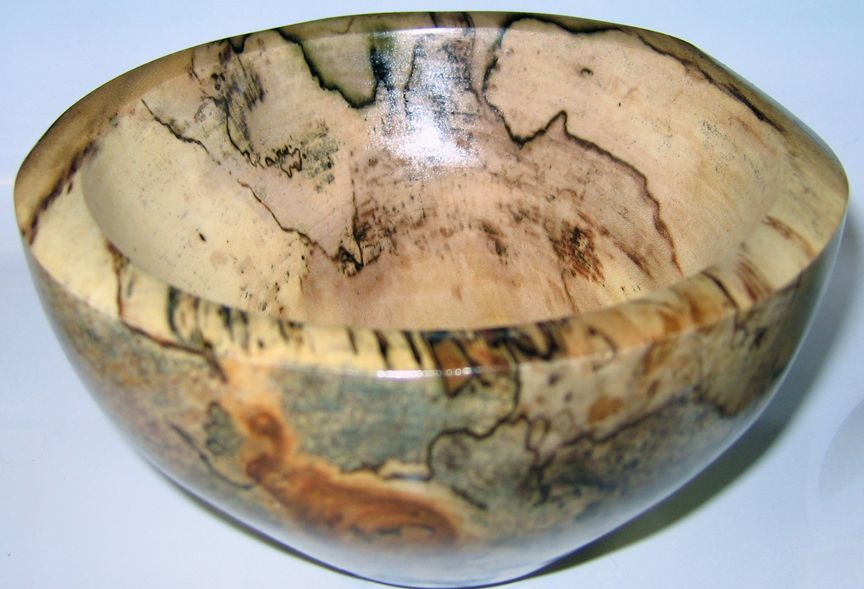
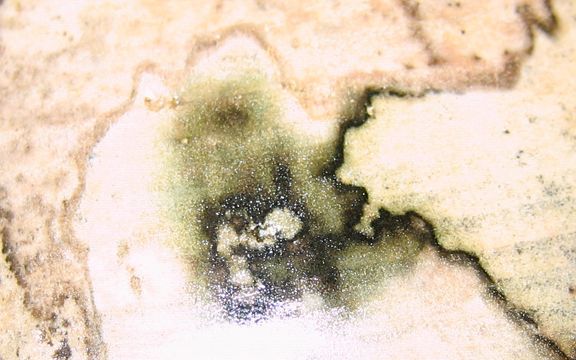

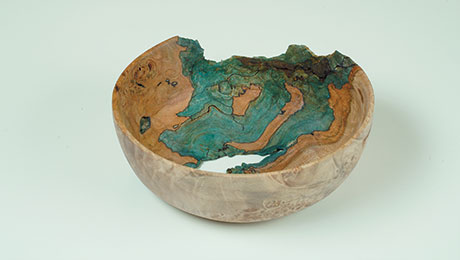
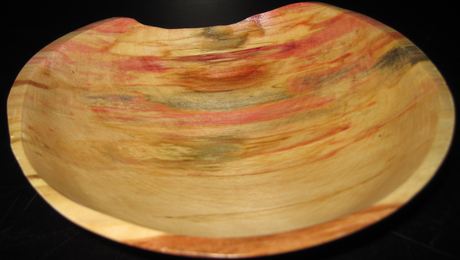
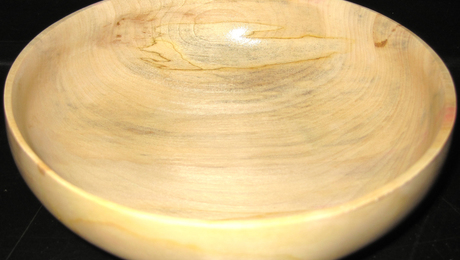
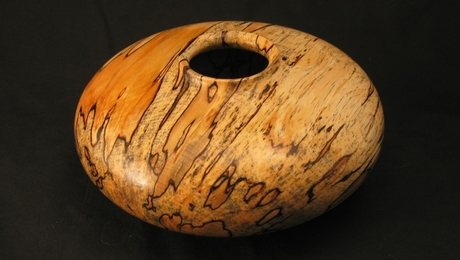


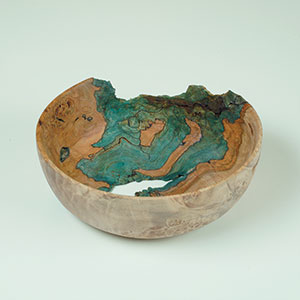



















Comments
Hi Sara,
I think your blog posts are well-written and extremly interesting. The photography is great too. Keep up the good work!
Patrick
Thanks Patrick! Always nice to know people are reading!
Hi Sara,
I'm glad I found you a few days ago. I have a serious jones for the nice things Chlorociboria Aeruginascens (which is called "pézize bleu-vert" here in France) does to wood, and finally searched the web for any info I could get on that then unknown to me mushy thingie. I'm overwhelmed that somebody, somewhere on this planet, actually studied that very fungus for the exact same purpose than I do: cultivate it to have a controlled way of producing naturally green-stained wood for fine woodworking! So thank you so much for all of that.
About the relationship between the zone lines and the stain, I have something that can be interesting to you. During last december's holidays, when looking for good woodworking material in the forest of my southern France village (I live in Paris as I study and work there), I found several pieces of decaying beech that were green-stained (alas, there was also a bit which actually had a few CA fruiting bodies on it, but at the time I didn't seriously think that I could find an easy way to propagate it; it was my first time finding CA fruiting bodies by the way, though I've got several blocks of CA-stained wood that I found several years ago).
Now with this particular find, something that I hadn't seen before jumped right to my eyes: usually, the CA stained wood of my finds is not zoned at all, but this time I found pieces that were very distinctively spalted AND stained, with the green stain being locked inside areas surrounded by black lines.
So the melamin lines on these might be particularly thick, or the pigment from the CA didn't get enough time to diffuse through them when I found the pieces of wood (among which one was still standing, but showed evidence of death and decay: the CA incursion ocurred approximately at the middle of said trunk, with all the rest looking perfectly "normal", no stain and no other spalting).
I can send you pictures of one of the small blocks I brough back, the contrasting zones are impressive, tough the stain isn't as intense as others I found several years ago. Yet it's blatantly green. Oh, and I also took back a big chunk of another trunk that was lying on the ground, under dead leaves, and which also had its central (lenghwise) part invaded and green, the biggest chunk I found so far (I took it back to Paris completely wet, despite the awful vinegar smell, just to give it a very fast drying schedule in order not to risk losing it; it cracked a bit but it's okay). That one is already online in one of my posts at LumberJocks, here: http://lumberjocks.com/projects/42071
Again thank you so much for all the data you've made available on that matter! Sorry for being so wordy on this comment, I'm so excited at the idea of actually having a scientifically-proven way of growing and using these nice fungi, I can't wait until I go back to my village and run to the hills for more :)
Cheers!
Thomas
Thomas -
Sounds like you found a log early in C. aeruginascens' colonization. It is rare to have zone lines with C.a., mostly because the fungus is a very late stage colonizer and usually won't get at wood until it is almost mush. The C.a. on that particular log hit a still-intact zone line (not produced by C.a., but from a previous colonizer), and could not jump the line. Zone lines are fantastic for herding the colored fungi, and you can use that to your advantage if you ever want to induce spalting.
I'd love to see some photos. You can e-mail me through my website, which is linked at the bottom of the above article. You might also be interested in this article:
http://www.sciencedirect.com/science?_ob=ArticleURL&_udi=B6VG6-4YX65K0-2&_user=10&_coverDate=07%2F31%2F2010&_rdoc=1&_fmt=high&_orig=search&_origin=search&_sort=d&_docanchor=&view=c&_searchStrId=1626139159&_rerunOrigin=google&_acct=C000050221&_version=1&_urlVersion=0&_userid=10&md5=8137fd3de5bef0f2d1ce3617bf598b6f&searchtype=a
I had a look at your lumberjocks site. You mentioned that the pigment is unstable at high temps - its not that its unstable, but that it runs! High temps help the pigment disperse, which is another way to get a little bit of green through a big piece of wood if you, say, heat it up in the microwave.
Always great to meet another spalting enthusiast!
I had seen that link already, alas right now I can't buy the article. Recession, y'know... :)
As for the early colonizer, I will go get the surrounding trunks of that same stump (still standing but dead anyway) and check them out with precision, get measures and slice them for dimensional examination of any fungal activity hint. The fact that I found two trunks invaded by Ca at a relatively long length from both ends is a bit too much of a coincidence for me. The matter of the fact being that the central point of a log is the less likely part to have been invaded by fungi, which to my knowledge and certainly yours too prefer to go through the easiest path, ie along the grain, starting from the ends, whereas Ca seems to always start across the grain and from the surface (and not in direct light) and not in a zone that seems to have been hurt before, at least in my latest finds, which intrigues me a lot.
About the post on Lumberjocks, I stated that the pigment vanishes when heated as that's what happened to me when sawing Ca stained wood with an old (as in dull) bandsaw blade that generates lots of heating (but gives a very smooth and clean cut), and also when polishing it with a high-speed sanding pad (on a Dremel). I noticed in both cases that when heated above a certain temperature, completely dry wood loses the stain permanently. I gave it another try right now with small chips from the big piece in the picture you saw, and indeed the pigment doesn't like it too hot and disappears completely. After all, having seen the overall shape of its molecule, that doesn't surprise me much, maybe it breaks appart and evaporates.
I have lots of chips and sawing dust at my parents' place in an isolated container from my previous find that I cut into veneer: I clean my bandsaw thoroughly between different species and keep the sawdust for uncommon material, mixed with epoxy it makes for the perfect matching filler if need be. I'll bring some back and will see with the folks in the chem labs at my university if we can run a heating test to check the exact temperature at which the stain disappears.
BTW I read that when exposed to UV light after having been extracted in a basic medium, the xylindein turns red:
http://sciencelinks.jp/j-east/article/200407/000020040704A0194695.php
Imagine that: pouring NaOH in a splotchy way on a piece of Ca-stained wood, exposing it to UV and then thoroughly rinsing it to remove the remaining NaOH: bicolor stain!
Anyway, the main concern I see anyway is when polishing Ca-stained wood: if too much heat is generated, the color fades away forever. Well that's no good news at all for the main purpose of staining the wood by natural means. Hence the piece of advice to fellow woodworkers that would find some in good shape and give it a try at some beautiful things, it would be too bad for them to have a disappearing color issue when cutting or sanding it.
And talking about that, I was surprised not to find a green bowl on your website ;)
I'll take some pictures tomorrow by the sunlight to give you the better view I can get of that herded early colonizer bits, before I carve them out into sweet little things :)
(on §2 last line of my previous post, I meant "a zone that has NOT been hurt before", pitty the comments can't be edited)
Log in or create an account to post a comment.
Sign up Log in